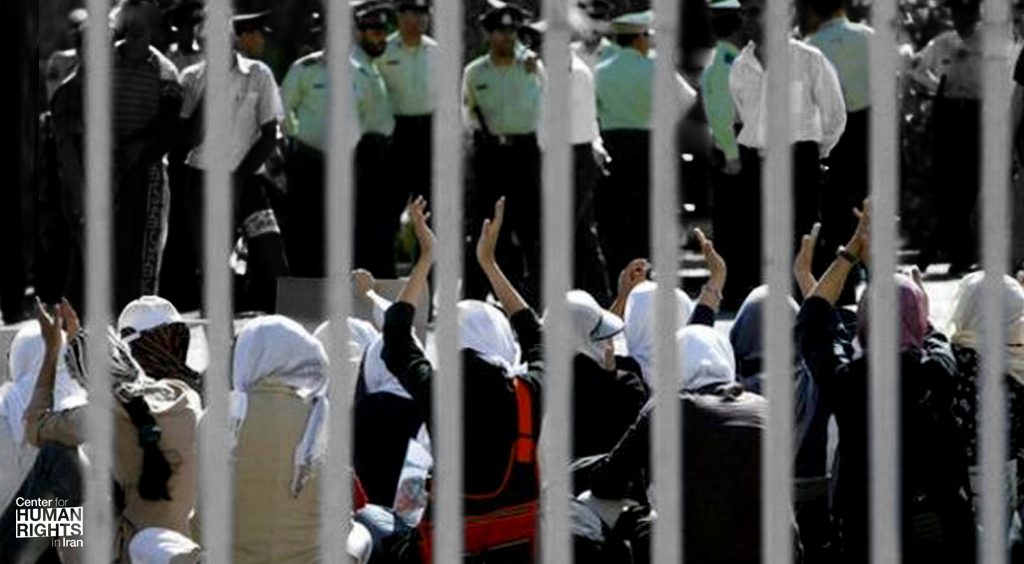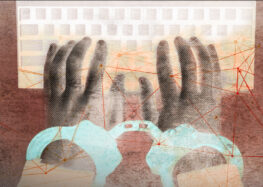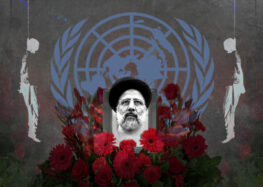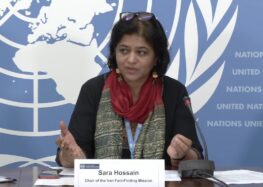Leaked Iranian State Document: Expect Protests to Get Bigger and More Frequent
 High-Level Intelligence Official: “Social Discontent Has Increased About 300 Percent”
High-Level Intelligence Official: “Social Discontent Has Increased About 300 Percent”
A top-secret Iranian state document leaked to RFE/RL’s Radio Farda has revealed senior intelligence and military officials’ internal assessment of the country’s severe social and economic malaise, and their expectations of bigger and more frequent protests in the coming months.
“There has been a development in society that indicates it is in a state of explosion under its skin,” said an officer of the Islamic Revolutionary Guard Corps (IRGC) Intelligence Organization, at a November 2021 private meeting of the “Task Force to Prevent Security Crises Among Lower Classes,” according to the state document leaked to RFE/RL’s Radio Farda by a hacker group calling itself “Ali’s Justice.”
“When the new government took power [in August 2021], public confidence indicators improved, generating hope and expectation,” said officer Mohammadi (first name not given), the intelligence organization’s deputy for social affairs, at the November 24 meeting. “[But] because of several shocks in recent months, people are doubting whether this government can [deliver]. Currently 53 percent of society is doubtful about the government’s claims.”
“During the past year social discontent has increased about 300 percent, with protests focused on inflation, salary delays, social disorders, and water [shortages],” added Mohammadi. “Currently the policies toward [the official dollar exchange rate] of 4,200 tomans [Iranian currency] are insufficient.”
The document has not been independently verified. The group that leaked it has previously leaked other secret documents and videos about the mistreatment of inmates in an Iranian prison.
According to the document, the meeting of the “Task Force to Prevent Security Crises Among Lower Classes” was chaired by the IRGC’s second in command, Gen. Hossein Nejat, and attended by representatives from the IRGC’s Intelligence Organization, the Basij paramilitary force, the Intelligence Ministry, the public security division of the police force, and other state agencies.
The meeting was focused on the potential adverse outcomes of the Iranian government’s push to end the artificial exchange rate of 4,200 tomans per dollar. The free-market rate is more than 27,000 tomans, meaning prices could skyrocket more than sixfold if the preferential rate is eliminated.
IRGC commander Gen. Beigi, the deputy in charge of intelligence at the IRGC’s Sarallah Headquarters, warned of more protests if the plan is implemented prematurely and called on the government to be prepared to suppress protests:
“Because of the special circumstances, it would be best if this plan is not implemented this year, even though the government is insisting on it. In next year’s budget it would be better to include some stipulations for its implementation. The plan should be enforced with prior knowledge and include supplementary projects. The possibility of a security situation occurring during implementation should be anticipated.
We will see a considerable spike in prices in the market and during implementation we should take precautions and be sure the market will be flooded with goods. Both production and distribution networks are faulty. Division of work and responsibilities should be reviewed and properly carried out. The enemy will carry out psychological operations, which will be followed by social protests. In terms of security, we should not be left off guard. We must investigate how to implement security considerations. “
Col. Kaviani, representing the police security division, noted that protests will continue to grow and increase in frequency:
“[Protest] gatherings in [the Iranian year of] 1400 [began March 21, 2022] compared to last year [March 20, 2021-March 21, 2022] have increased 48 percent and crowd numbers rose 98 percent, meaning that there were 5,373 people at the rallies last year and this year there were 10,656.
Economic [protest] gatherings have increased 56 percent compared to last year while protests at labor units have increased 136 percent. Most protests have taken place in front of Parliament or the Ministry of Labor, with the latter currently experiencing most of the protests.
In the last four months of the year [ending March 20, 2022], we predict there will be 55 economic protests. This year there will be a 22 percent increase in economic protests compared to last year.”
Read a version of this article in Persian






